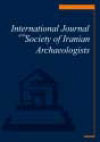Palaeopathological Analyses of Human Skeletons: Statistical Analysis of Health and Disease among the Chalcolithic and Bronze Age Populations at Tepe Hissar
Author(s):
Article Type:
Research/Original Article (دارای رتبه معتبر)
Abstract:
During the approximately 2500-year history of the site (ca. late-5th to early-2nd millennium bce), Tepe Hissar experienced a number of cultural, economic, and social transformations, which were accompanied by conflict, population movements, an increase in industrial activities, as well as episodes of site abandonment and reoccupation. This study investigates the impact of these socio-culturaleconomic changes on the health of the people buried at Tepe Hissar. This study examines the pathological indicators of nutritional stress and skeletal metabolic disease using a sample of 313 adult individuals, stratified by sex and age, as well as by chronology. The chi-square test was employed to compare the significant differences in the prevalence of metabolic disease within and between the Tepe Hissar populations grouped by sex and age category. For those samples too small to be subjected to chi-squared significance testing, Fisher’s exact test was used. Both calculations were conducted in Excel and SPSS 20. The results of these tests showed that males and females of all age groups from each of the three periods at Tepe Hissar experienced similar episodes of health and stress during their lives. Specifically, approximately half of the individuals from each period experienced some form of metabolic skeletal disease. Statistical analyses did not show any significant increase or decrease in the prevalence of nutritional stress or other metabolic diseases among this population between periods. The results of this research indicate that the socio-cultural-economic changes and events that occurred at this site, particularly during Hissar II and III, did not have a significant impact on the general health and disease of the population. This research suggests that the society at Tepe Hissar had access to similar levels of food resources and experienced similar living conditions over time from the late-5th to the early-2nd millennium bce. The high rate of metabolic bone diseases in each period, however, could have been due to exposure to toxic elements such as lead and arsenic which were widely utilized in metallurgical production at Tepe Hissar throughout its history.
Keywords:
Language:
English
Published:
International Journal of the Society of Iranian Archaeologists, Volume:3 Issue: 5, Winter-Spring 2017
Pages:
31 to 44
magiran.com/p1890897
دانلود و مطالعه متن این مقاله با یکی از روشهای زیر امکان پذیر است:
اشتراک شخصی
با عضویت و پرداخت آنلاین حق اشتراک یکساله به مبلغ 1,390,000ريال میتوانید 70 عنوان مطلب دانلود کنید!
اشتراک سازمانی
به کتابخانه دانشگاه یا محل کار خود پیشنهاد کنید تا اشتراک سازمانی این پایگاه را برای دسترسی نامحدود همه کاربران به متن مطالب تهیه نمایند!
توجه!
- حق عضویت دریافتی صرف حمایت از نشریات عضو و نگهداری، تکمیل و توسعه مگیران میشود.
- پرداخت حق اشتراک و دانلود مقالات اجازه بازنشر آن در سایر رسانههای چاپی و دیجیتال را به کاربر نمیدهد.
دسترسی سراسری کاربران دانشگاه پیام نور!
اعضای هیئت علمی و دانشجویان دانشگاه پیام نور در سراسر کشور، در صورت ثبت نام با ایمیل دانشگاهی، تا پایان فروردین ماه 1403 به مقالات سایت دسترسی خواهند داشت!
In order to view content subscription is required
Personal subscription
Subscribe magiran.com for 70 € euros via PayPal and download 70 articles during a year.
Organization subscription
Please contact us to subscribe your university or library for unlimited access!


